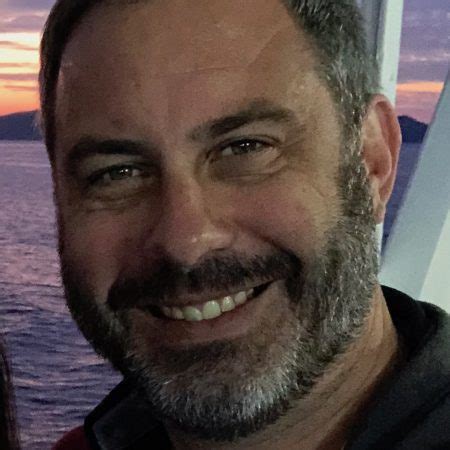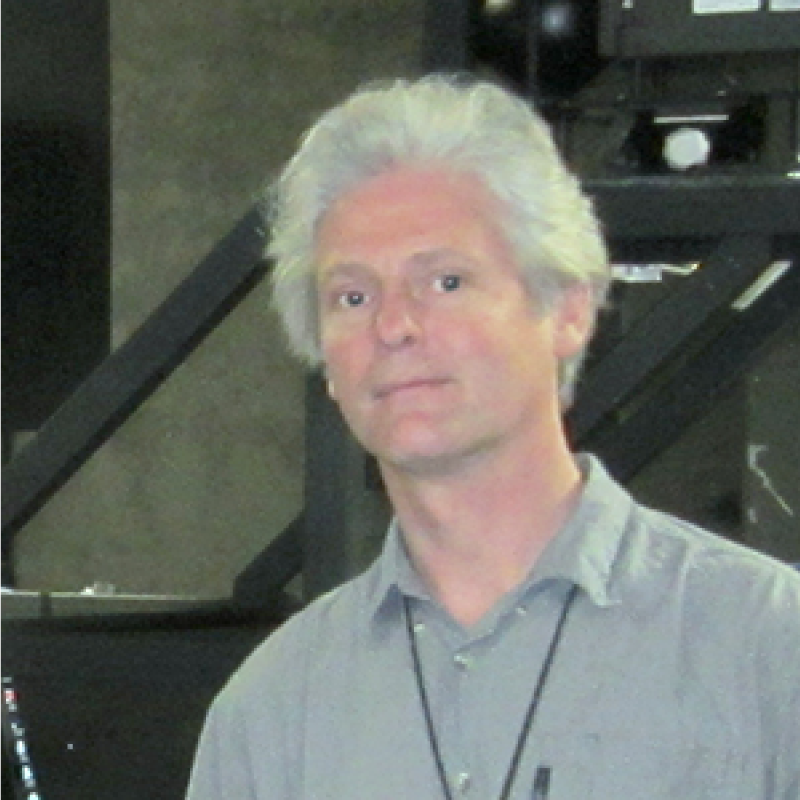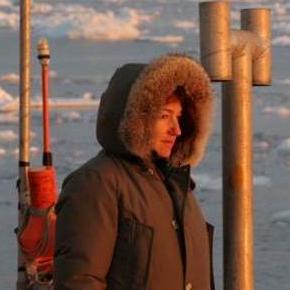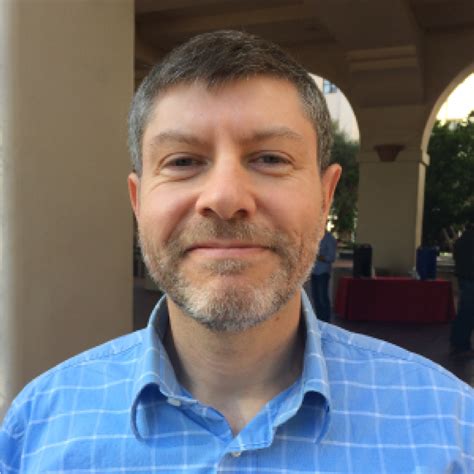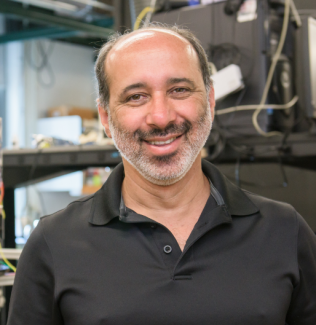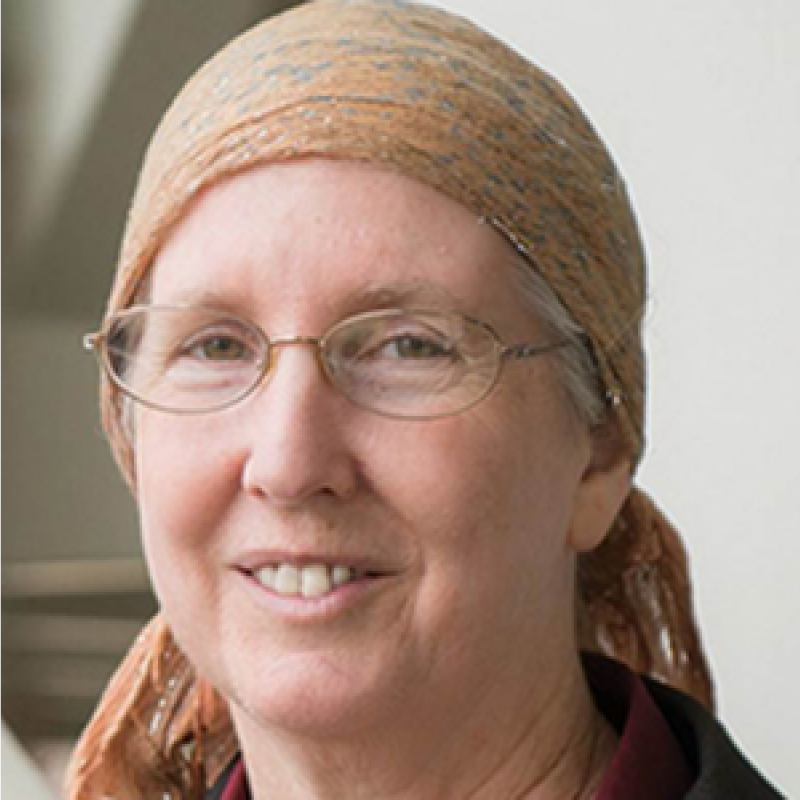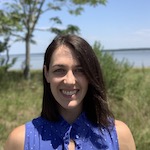
In 2015, NASA directed the PACE mission to Goddard Space Flight Center following recommendations from the 2010 NASA document Responding to the Challenge of Climate and Environmental Change: NASA’s plan for Climate-Centric Architecture for Earth Observations and Applications from Space. This direction ultimately realized the research communities’ decade-plus push for a future Earth-observing satellite mission to meet growing needs for scientific discovery. A central objective of PACE is enabling new insights on the sensitivity of global aquatic ecology and biogeochemistry to environmental change.
While heritage ocean color missions have provided desperately needed platforms for observing grossly under-sampled ocean ecosystems since 1997, the oceanographic community quickly recognized the need for enhanced satellite measurement capabilities to address the additional issues of changing phytoplankton distributions, ecosystem and habitat health, and carbon fluxes in the global oceans. The second objective of PACE is the retrieval of advanced atmospheric data products with the goals of reducing uncertainties in global climate models and improving our interdisciplinary understanding of the ocean-atmosphere system. Despite the substantial achievements of heritage satellite missions, better constraining aerosol and cloud properties and improving our understanding of effective radiative forcing requires significant advances in measurement capabilities. Phrased simply, PACE is NASA’s next great investment in ocean, clouds, and atmospheric data records to enable continued and advanced insight into oceanographic and atmospheric responses to Earth’s changing climate.
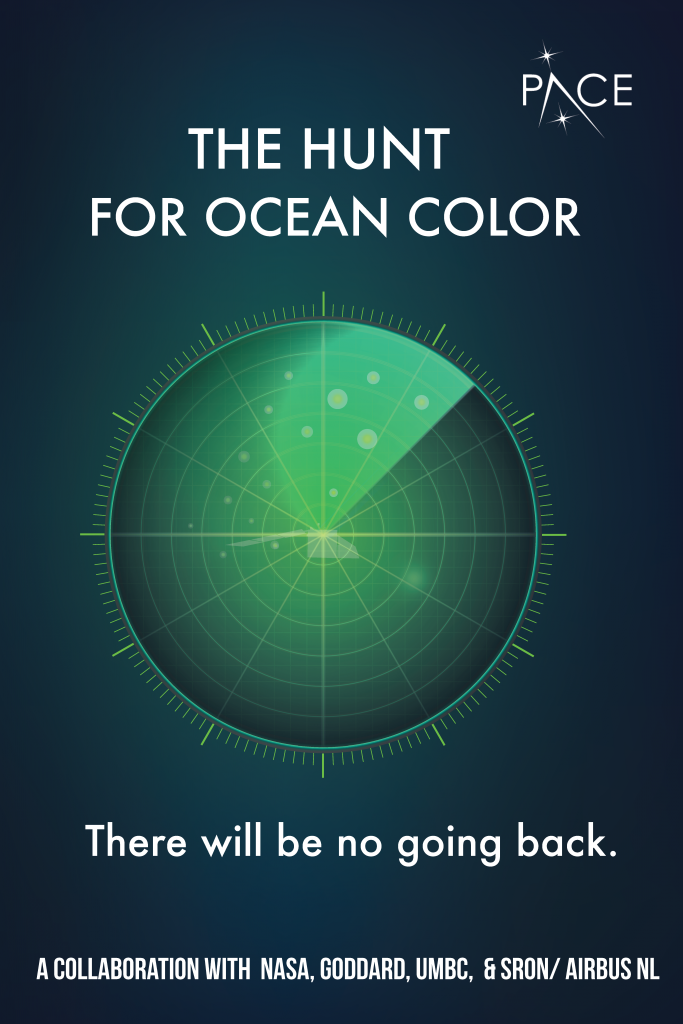
Training Activity: A one-week graduate-level course on the upcoming NASA PACE mission and passive satellite remote sensing, with foci on both oceans and atmospheres. The activity will comprise lectures, labs, field trips, and special events.
Target audience: Graduate students, post-doctoral fellows, or early career professionals (defined as <4 years since completing their terminal degree)
Location: Univ. Maryland, Baltimore County
Dates: August 1-5, 2022
| Date | No. | Lecture Title |
Presenter |
|---|---|---|---|
| 8/1 | 1 | Welcome | Jeremy Werdell |
| 8/1 | 2 | History of Ocean Color | Jeremy Werdell |
| 8/1 | 3 | History of Atmospheric Science from Satellites | Lorraine Remer |
| 8/1 | 4 | History of PACE | Jeremy Werdell |
| 8/1 | 5 | Introduction to Radiative Transfer | Pengwang Zhai |
| 8/1 | 6 | Passive Remote Sensing, Radiometry, and Polarimetry | Brian Cairns |
| 8/1 | 7 | The SPEXone Instrument | Brian Cairns |
| 8/2 | 8 | Mission Design Choices | Jeremy Werdell |
| 8/2 | 9 | How Does it Work: HARP2 | Noah Sienkiewicz |
| 8/2 | A | PACE Mission Systems Engineering | Gary Davis |
| 8/2 | B | Ocean Color Instrument | Eric Gorman |
| 8/2 | C | Integration and Testing | Veronica Pinnick |
| 8/2 | D | Life of a Spacecraft | Beth Weinstein |
| 8/2 | E | Safety and Mission Assurance | Brad Weidema |
| 8/2 | F | PACE Ground Segment Overview | Robert Schweiss |
| 8/3 | 10a | PACE Ocean Color Atmospheric Correction | Amir Ibrahim |
| 8/3 | 10b | PACE OCI Cloud Algorithms | Andrew Sayer |
| 8/3 | 10c | Aerosols from OCI | Lorraine Remer |
| 8/3 | 10d | Polarimetric Remote Sensing of Aerosols, Clouds, and Ocean Color | Brian Cairns and Pengwang Zhai |
| 8/4 | 11a | PACE for Ecosystem Modeling | Arlindo da Silva |
| 8/4 | 11b | PACE Ocean Products | Ivona Cetinic, Jessie Turner |
| 8/4 | 12 | Panel: Taking an Idea to Orbit | Brian Cairns, Ivona Cetinic, Ryan Vandermuelen, Lorraine Remer, Jeremy Werdell |
| 8/4 | 13 | PACE Data: Products, Formats, Distribution | Fred Patt |
| 8/4 | Lab Data Acquisition and Processing Overview | Jeremy Werdell, Jessie Turner | |
| 8/4 | 14 | The PACE Applications Program | Erin Urquhart, Natasha Sadoff |
| 8/5 | 15 | On Orbit Vicarious Calibration | Jeremy Werdell |
| 8/5 | 16a | Definitions: Uncertainty and Error | Andrew Sayer |
| 8/5 | 16b | Validating Ocean Color Products | Ivona Cetinic |
| 8/5 | 16c | PACE Remote Sensing Reflectance (Rrs) Validation | Amir Ibrahim |
| 8/5 | 16d | Validation of OCI Aerosol and Cloud Properties | Andrew Sayer |
| 8/5 | 17a | Validating Uncertainty Estimates | Andrew Sayer |
| 8/5 | 17b | PACE Remote Sensing Reflectance (Rrs) Uncertainty | Amir Ibrahim |
Lecture 2 - history of ocean color
Lecture 4 - history of atmospheric remote sensing
Lecture 5 - intro to PACE workshop
Lecture 6 - passive and polarimetry
Lecture 8 - satellites photons
Lecture 9 - how does the HARP2 work
Lecture A PACE Mission Systems Engineering
Lecture B Ocean Color Instrument
Lecture C Integration and Testing
Lecture D Life of a Spacecraft
Lecture E Safety and Mission Assurance
Lecture F PACE Ground Segment Overview
Lecture 10a - PACE ocean products
Lecture 10b - PACE OCI cloud algorithms
Lecture 10c - AEROSOLS from OCI
Lecture 10d - Polarimetric Remote Sensing of Aerosols, Clouds, and Ocean Color
Lecture 11a PACE for Ecosystem Modeling
Lecture 11b - PACE Ocean Products
Lecture 12 - Panel: Taking an idea to orbit
Lecture 14 - PACE applications program
Lecture 15 - on orbit calibration (for oceans and more)
Lecture 16a - definitions: uncertainty and error
Lecture 16b - validating ocean color products
Lecture 16c - PACE Rrs validation
Lecture 16d - validation of OCI aerosol and cloud properties
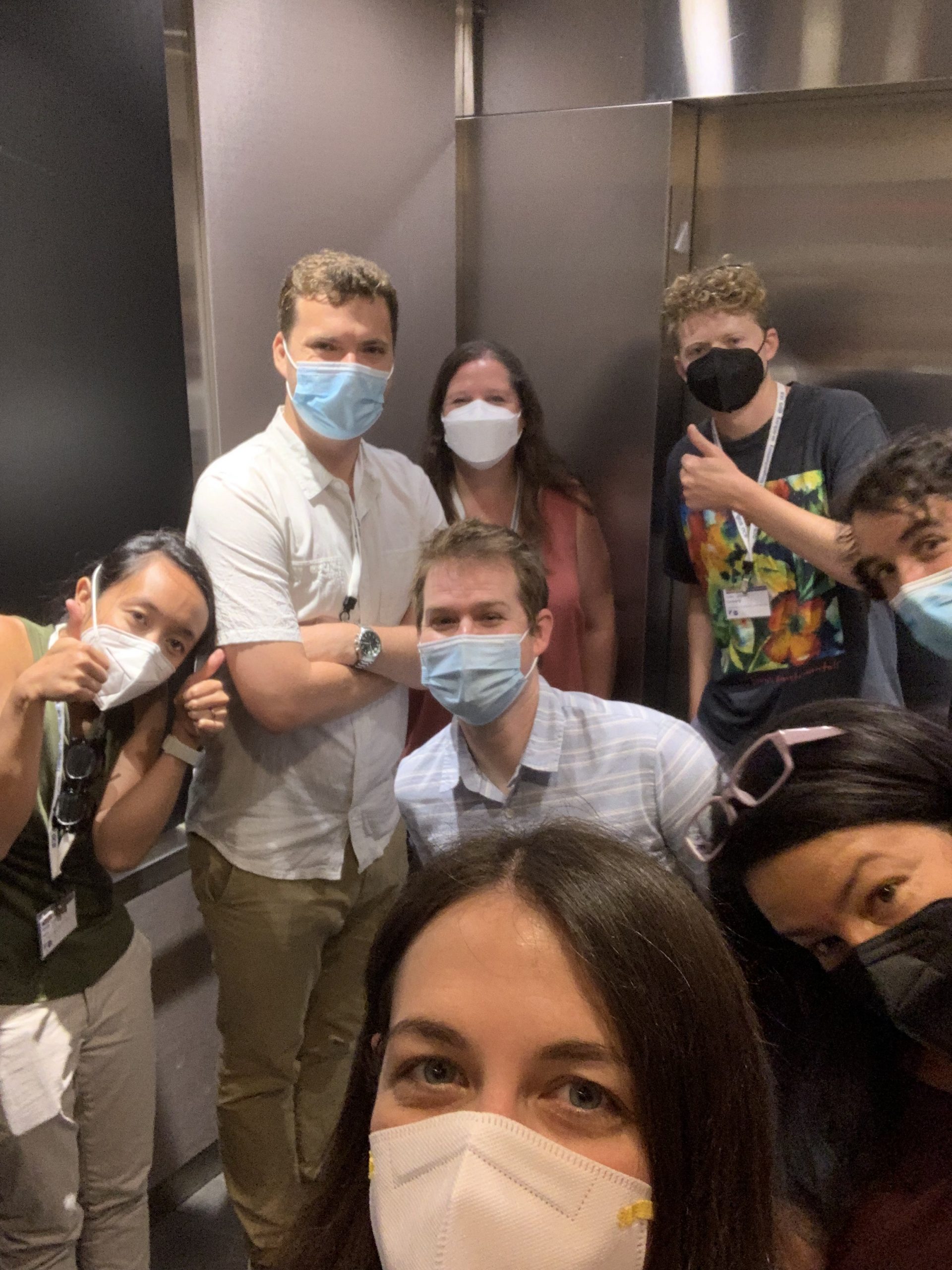
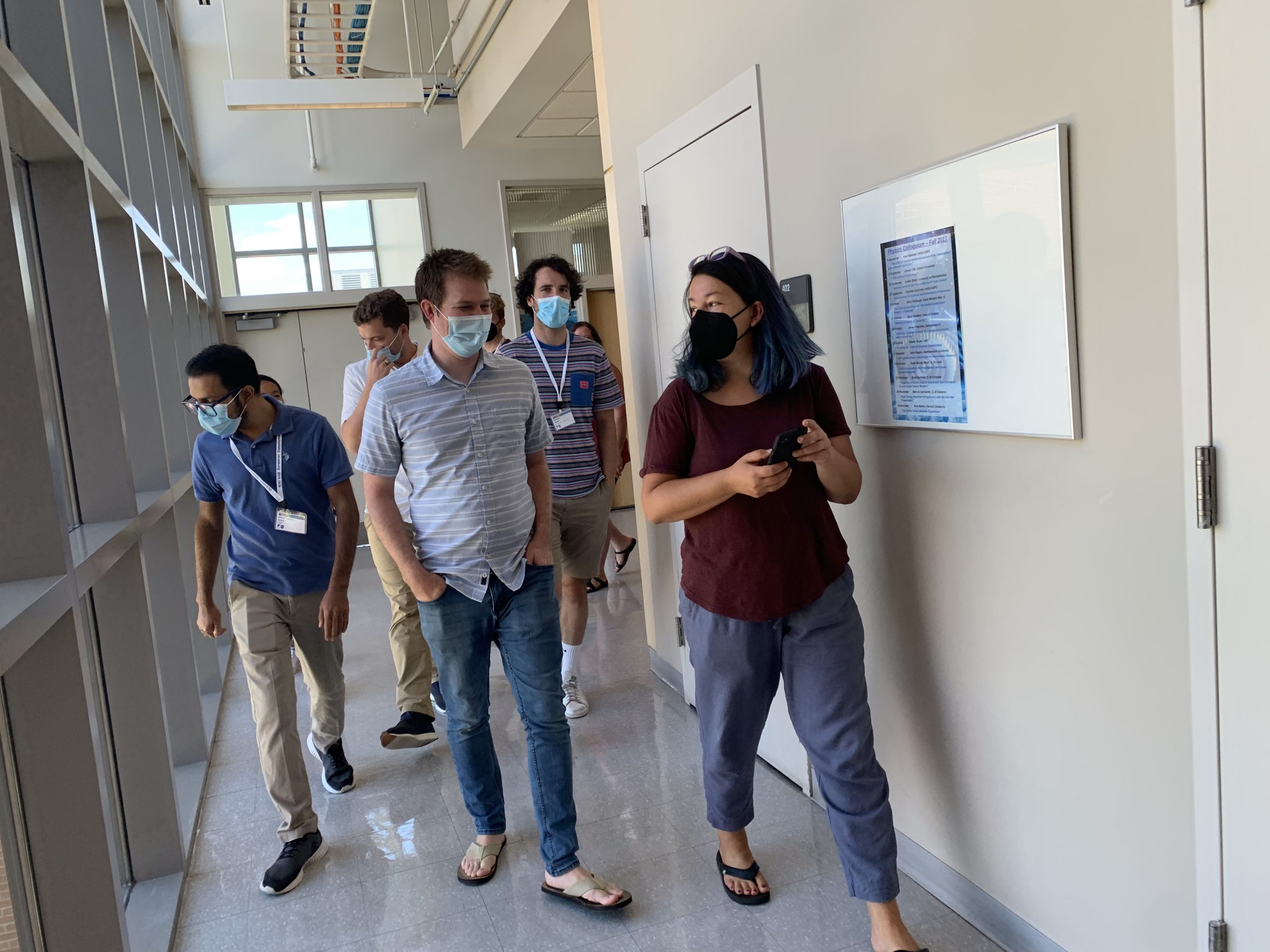
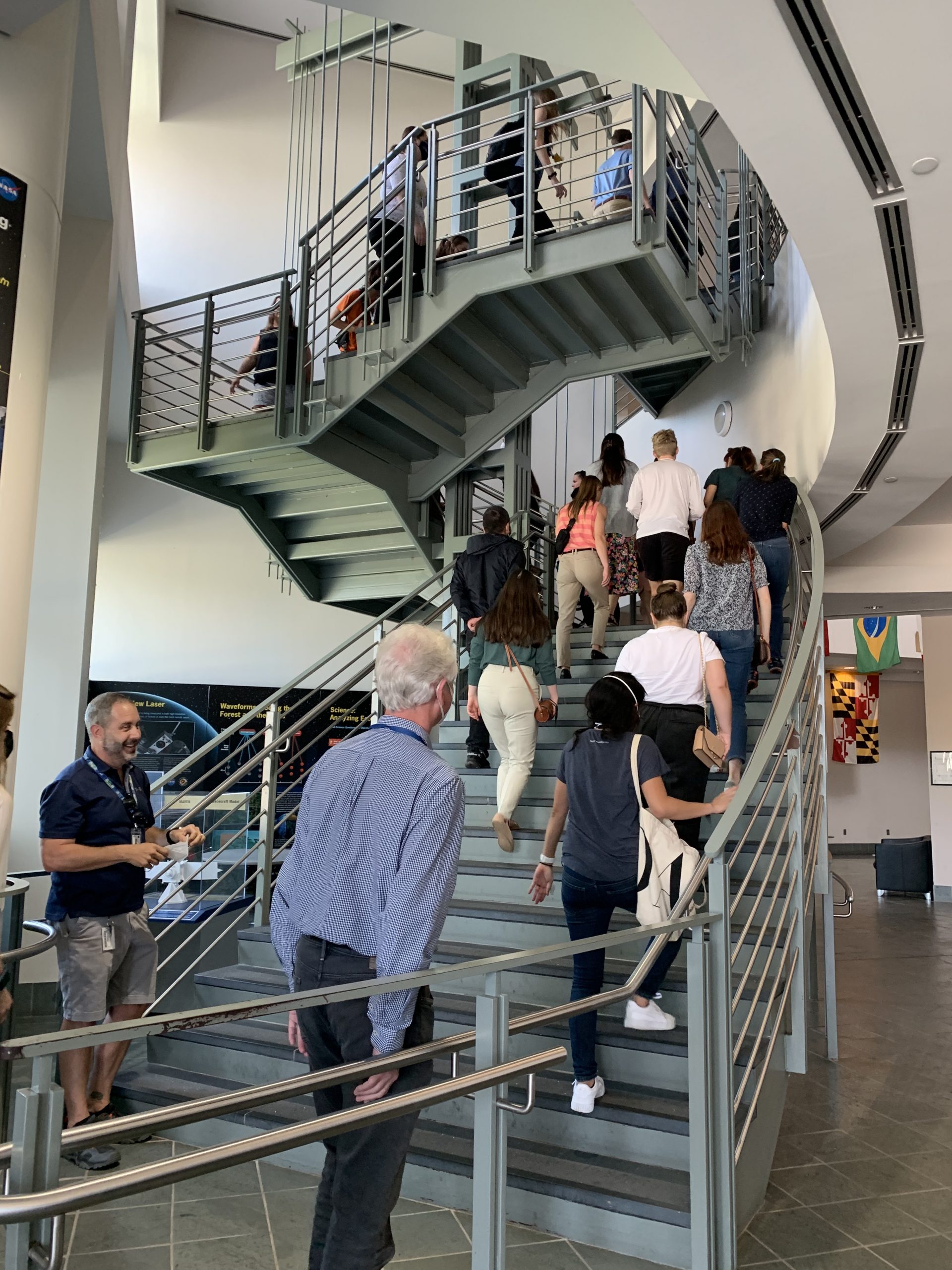
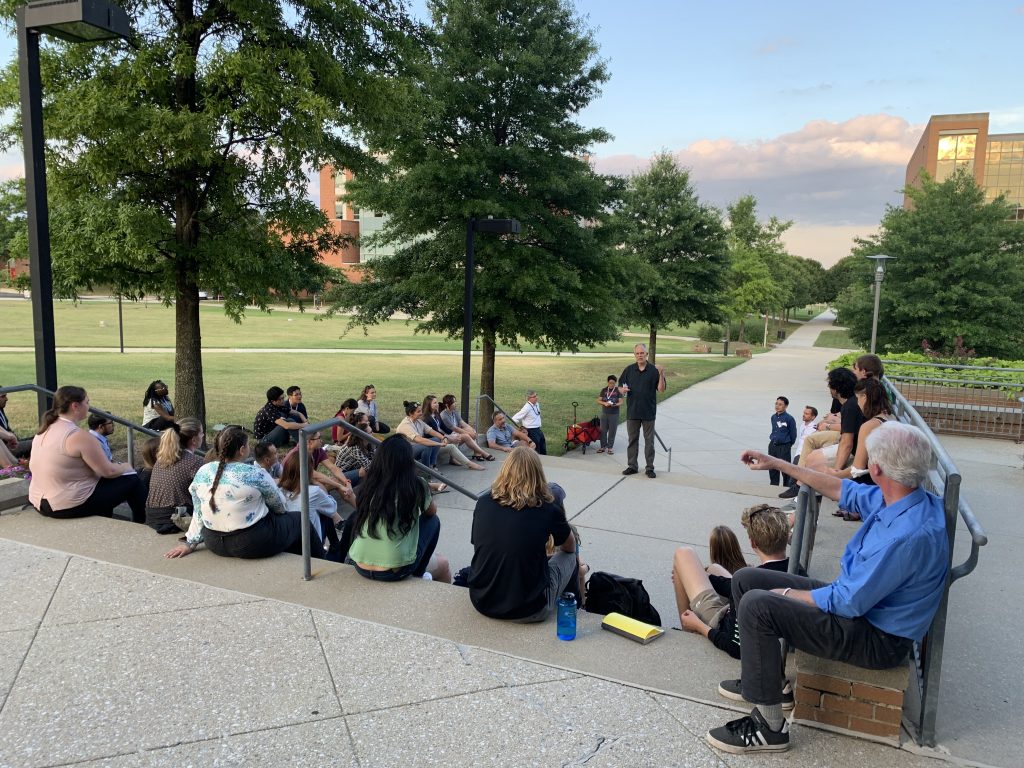
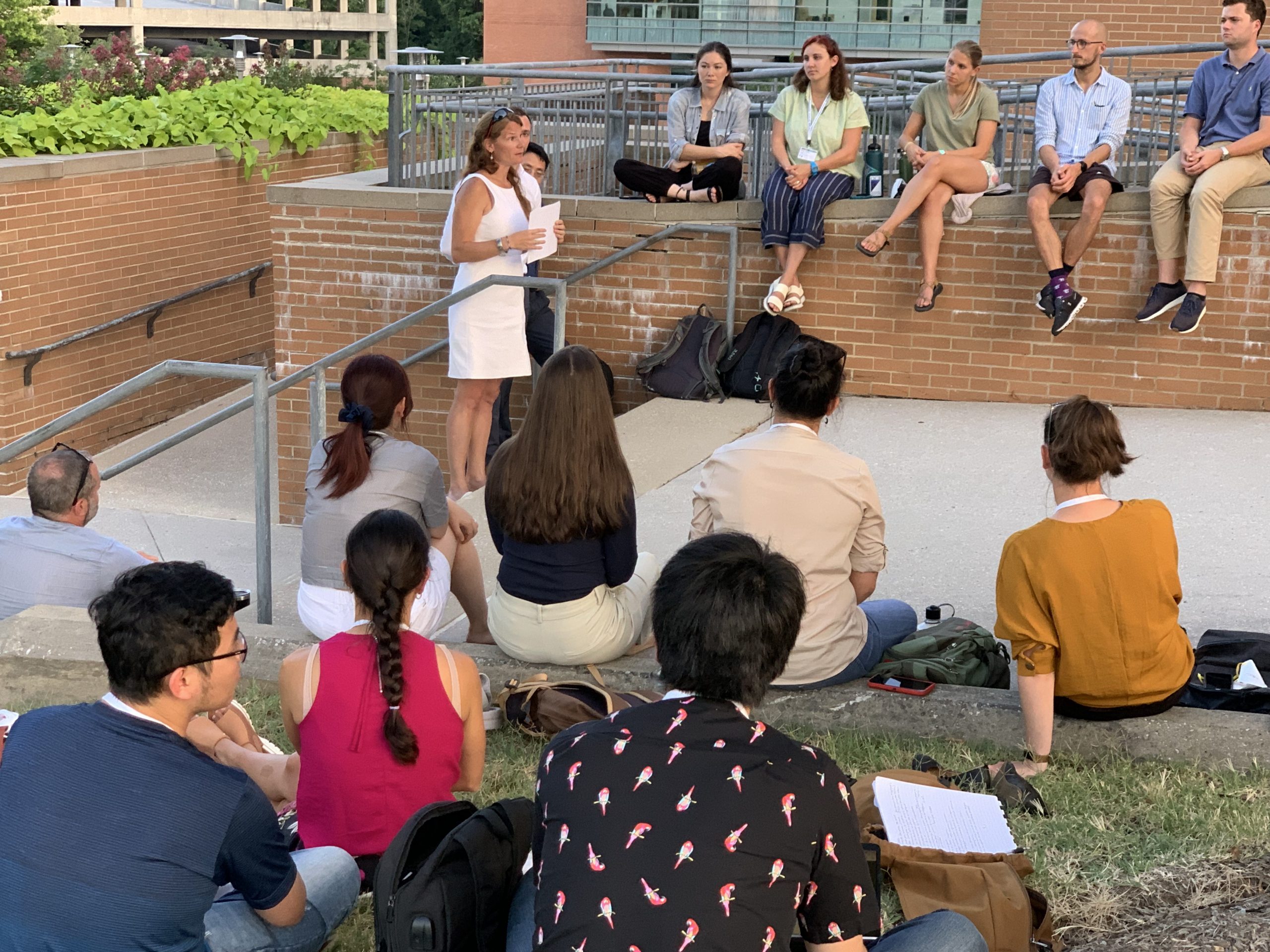
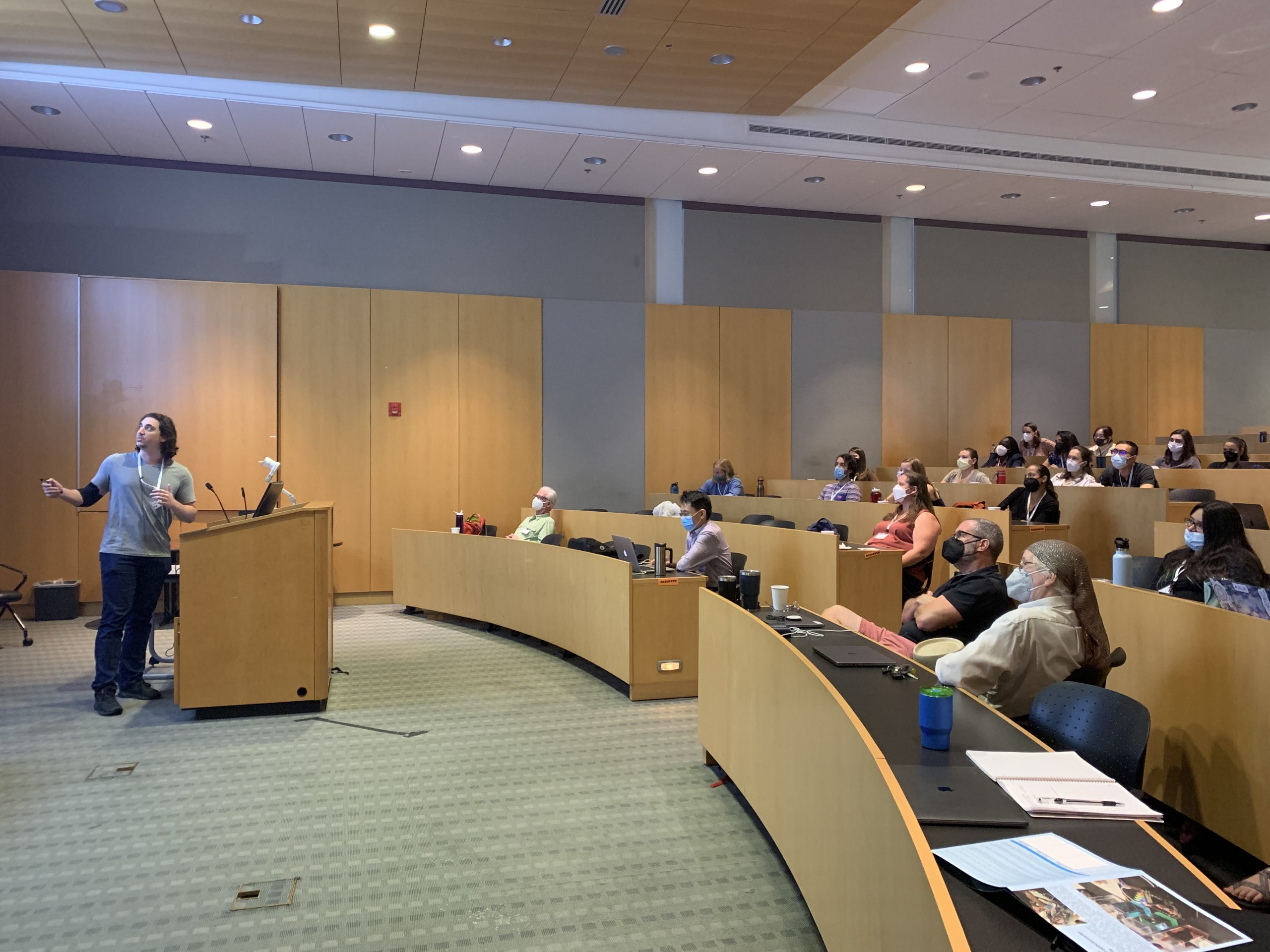
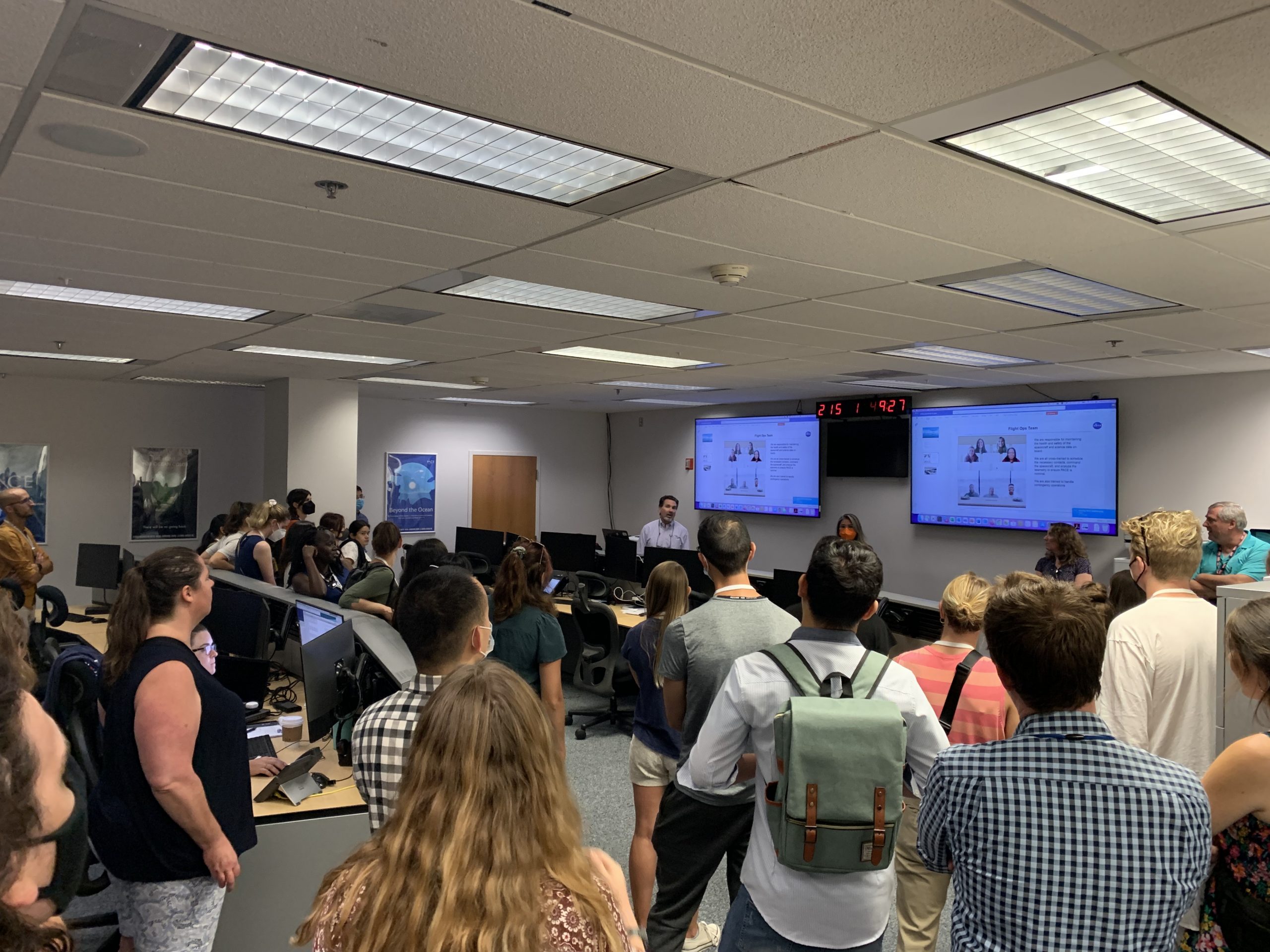
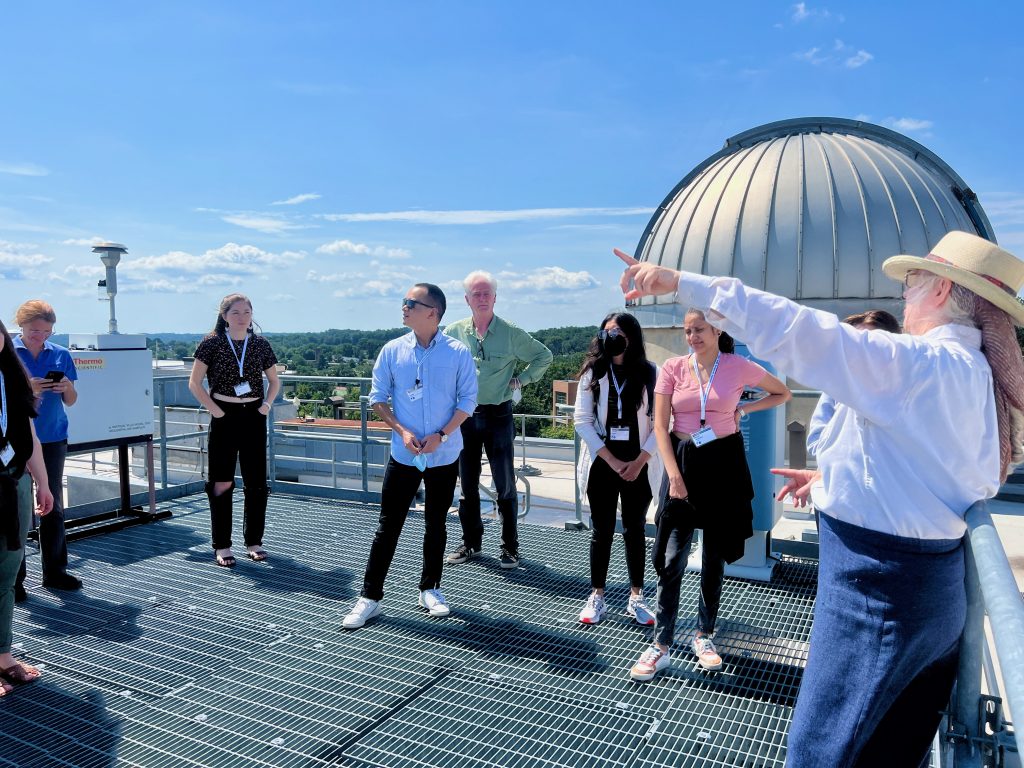
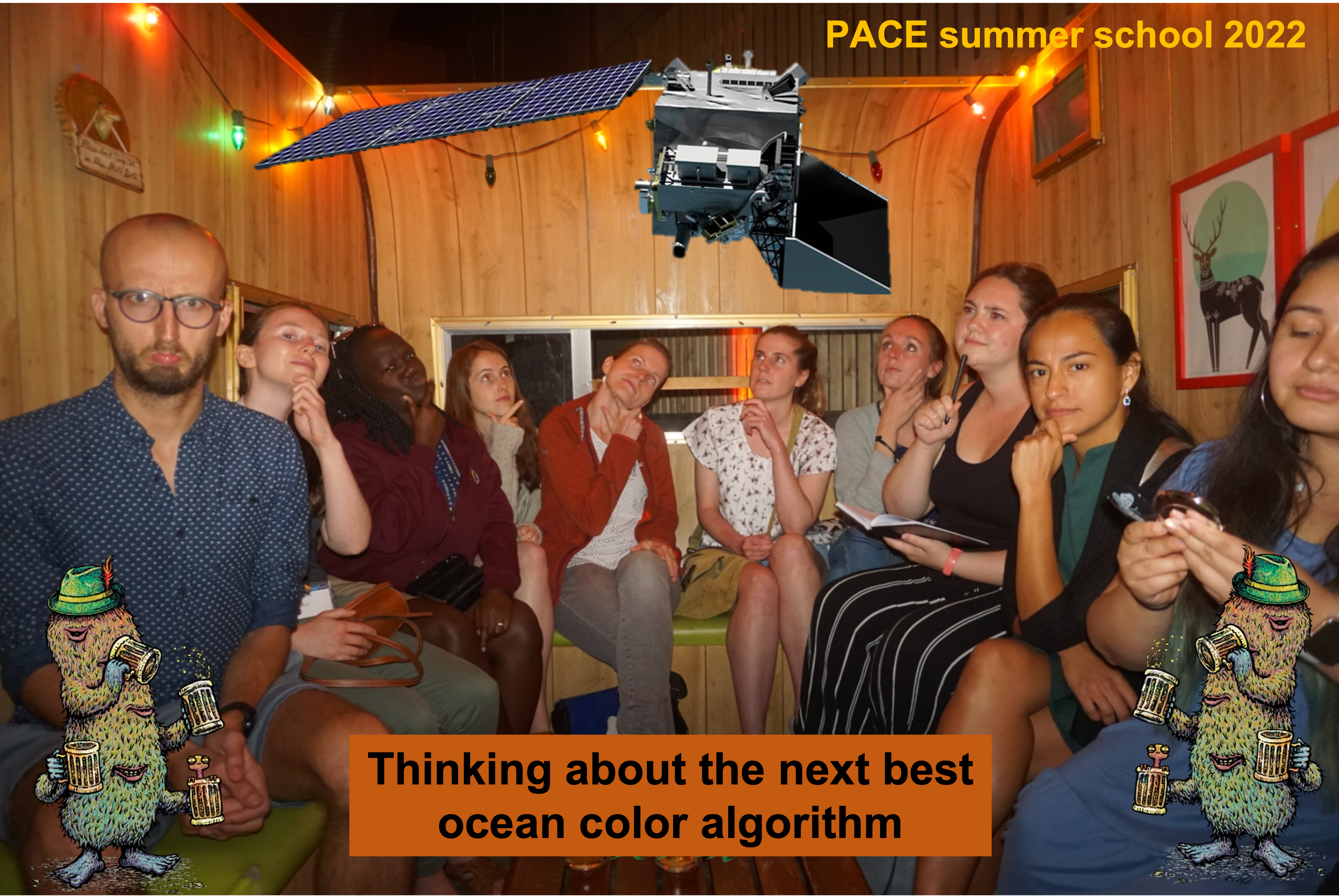
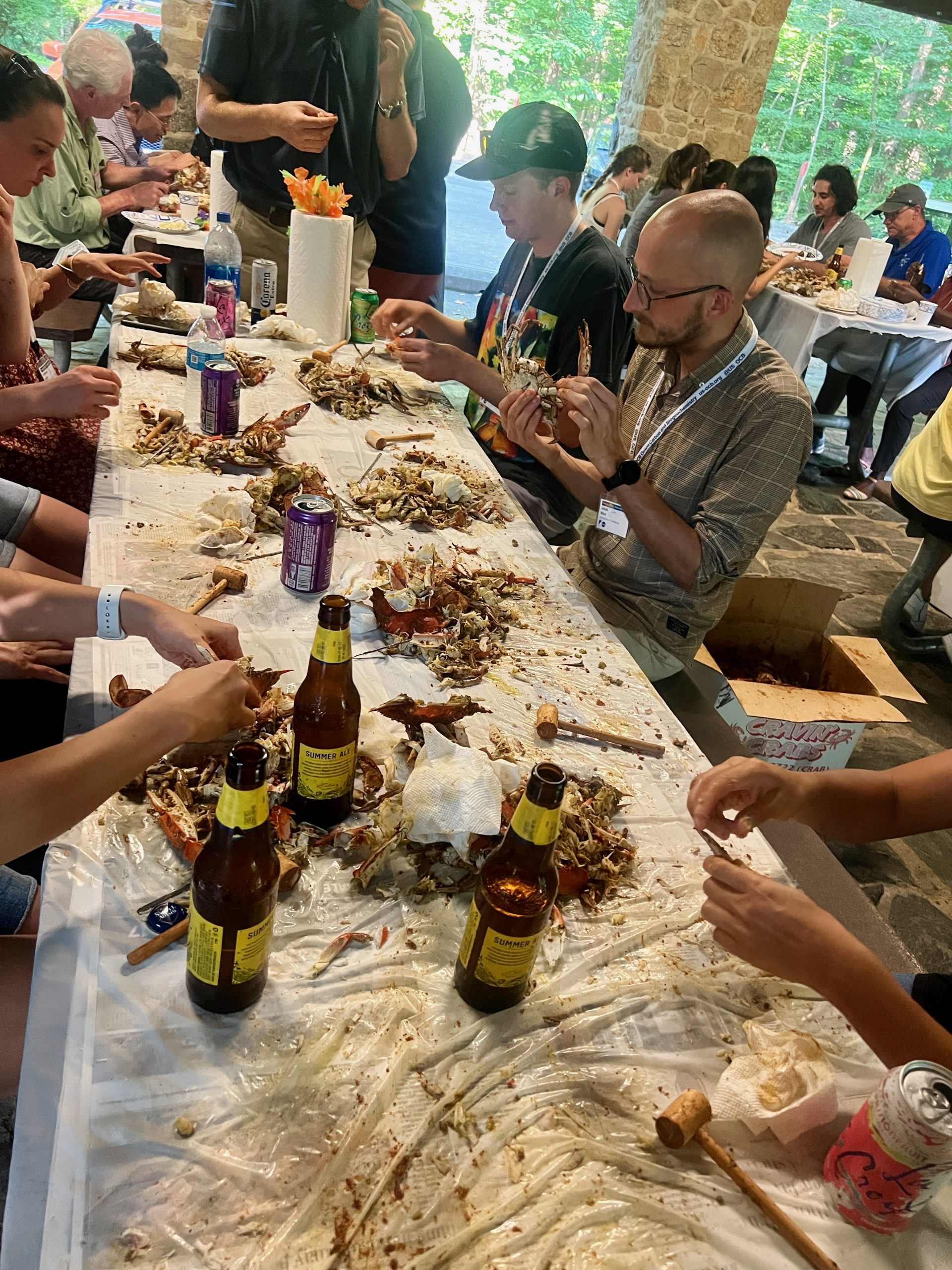
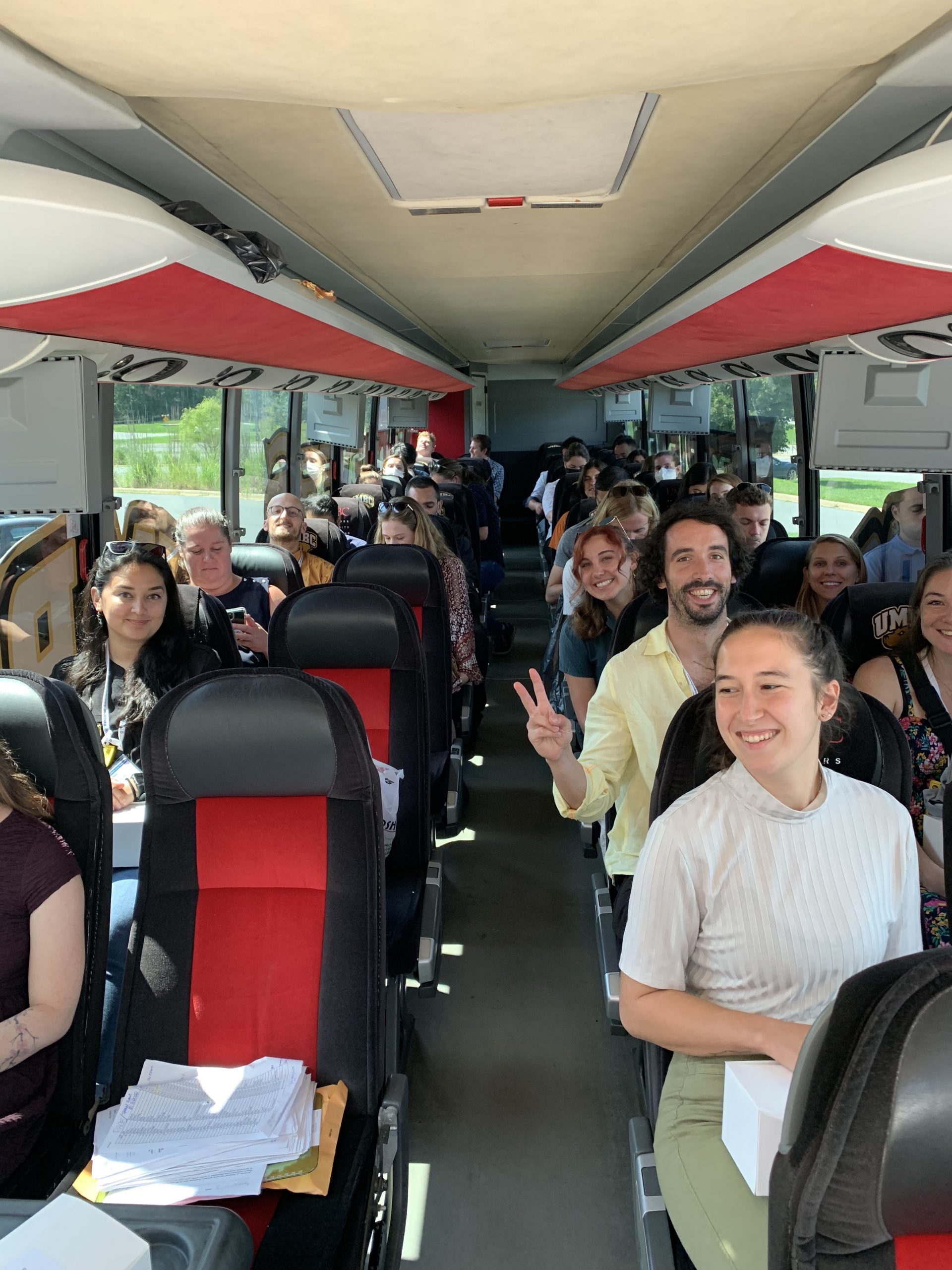
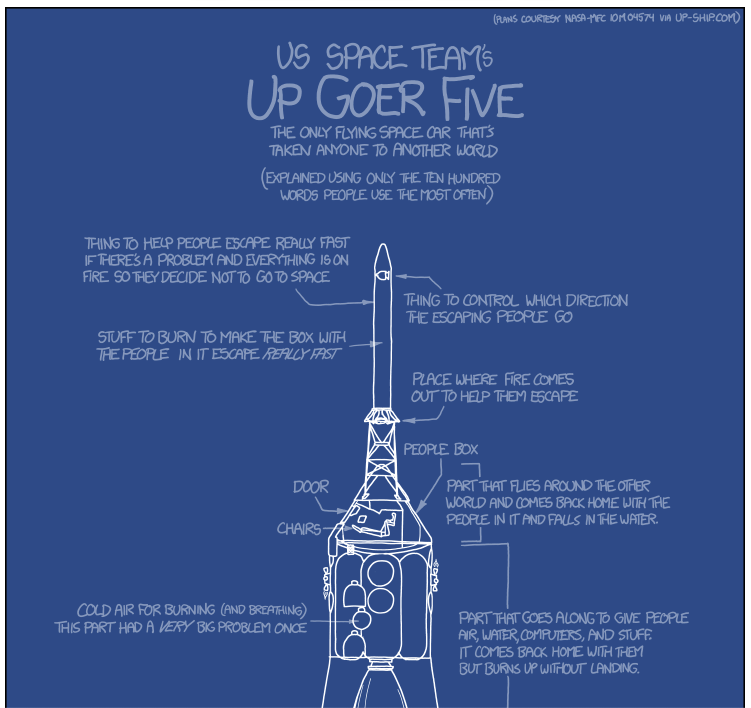
Image (above) from xkcd comics inspired PACE students & instructors to explain their own research using only the 1,000 most commonly used words:
For my work I look at the color of the water from space. Tiny things that live in the water send green and red colors off the water when there are lots of them in one area. I look at pictures from space for these colors at different times of the year in order to warn people whether or not it is safe to eat food from the water. --catherine
i study things in water that use light to make air that we breathe. they take stuff from air and push it into deep water. i use big things flying above water to see their color from far away. --ivona
The big water body at the bottom of the world is very important because it takes up a lot of the bad stuff that cars put into the sky (which makes our world become hotter and hotter). The bad stuff needs to be eaten by tiny little trees growing and living in the water to stay there for a long time. The problem is, there is very little food in the water and only a few tiny trees can grow before all the food is gone. Because of this, a lot of the bad stuff that goes into the water comes right back out again, which is not good. When more food gets into the water, though, tiny trees will suddenly start growing like crazy, take up a lot of bad stuff and store it in the water, which is good. But where does the food come from? From the sky! Tiny ground up rocks and fire smoke have a lot of tree food and can be carried to the water by winds. I study what happens to water trees when they get rocks and smoke to eat and what that means for the bad stuff in the sky. --jake
Sun light acts different on round and not round things in the air and everyone thinks smoke is round. I found not round smoke using a light from space so now I study really big fires to learn where, why, and how much not round smoke is in the air. --natalie
When you go in the water outside, look down. Can you see the bottom? If not, why not? What kind of stuff is in the water? Why is it not clear? Living things in the water need it to be clear so they can grow and live. So if it is not clear, we need to figure out what kind of stuff is in there blocking light. --jessie
The ocean is like a mud puddle. When there is water in a mud puddle, it gets muddy and turns brown. I study how that happens in the ocean. The mud in the ocean makes the ocean water brown. I look at how the ocean is like a mud puddle by looking at photos nasa takes from the sky. --hanna
In the really cold waters, everything dead and living has to deal with ice at the top of the water for many months of the year. I study how that white stuff is turning on and off the sun light for all of the green stuff in the water. Many green things on land and in the water use light to grow. So we need to know how much light gets through the ice and into the water to figure out how much green stuff can grow. This is important to know because all of the small and big animals living in the cold waters eat the green stuff or eat the animal which eats the green stuff. --lisa
I make sure people do their work and help them when they need help. I make sure that they have the money to do their work, and I help them write stories about their work when the work is done. --lorraine
Lakes and rivers and the part of the ocean that touches land is full of lots of things like dirt and very small plants and very tiny other stuff that all have color. Big flying boxes high up in the sky take huge nice pictures of the color. Computers help figure out what color tells us about what is in the water and where it comes from. We find out if the things in the water are good or bad and how to take care of water. --dulcinea
People need the water that is close to the land for drinking, to have fun, to move big things, and so that many animals and living things can be happy.
I use light to study the tiny living and not living stuff that is in the water. I work in waters with many (many!) not living tiny things that come from the land and change how the light moves.
They can hide the tiny living things and other stuff that has color in the water. I use big pictures from space and a computer to find how much of each of the tiny things and stuff there is in the water, so we can know how they change the way we use the water and think about how we can make it better. --fernanda
We flew over the water and took pictures to learn about tiny life in the water. Water moves this life around, and their different colors make the water look like a painting. I look at this painting up close to see the small parts. How does the water move to make this painting? How do the colors change? And if you are looking at a painting as big as the world, how much do the small parts matter? --sarah
The color of the water can tell you a lot about what is in the water.
If the water looks green, I think tiny animals are in the water that are food to other animals. These little animals are also kind of like trees and are very important to the water family and to the air humans breathe. However, too many of these little animals in the water can hurt bigger animals and humans. It's important to study these little animals/trees.
If the water looks brown, I think there are rock parts in the water. These rock parts can block light and also hurt larger animals in the water. It's important to study how much rock parts are entering the water.
I look at pictures taken from space and from other flying things to study the color of the water. This will help us understand how the world works and will keep animals and humans safe. —anna
If the big water group on the ground near where you stay was not green the day before today and today it is very green, it could have too many green tiny trees and animals. When you play in the water or drink, your skin and stomach may get sick. We use picture taking boxes in the sky to see the tiny things that make the water green and tell people if it is a good day to play in the water. —lydia
There are many different types of tiny things (like from the land) in the air that can sometimes stay in the air for a long time but sometimes land in the water. But where do the tiny things in the air come from? How far do they go? How much goes into the water? Do they help or hurt tiny living things in the water? I study what those tiny things in the air are made of. —hope
I study tiny living things in the water. Some living things use the sun to make food for themselves and for others. When the tiny things are happy, they make lots of food for other forms of life. If there is more food than they all need, it might build up and fall away. If the food is not good, they might have to work too hard and don't grow well. We can use an eye in the sky to take pictures of the tiny things that are different colors (like green and pink!) which make different kinds of food.
I want to know how happy the tiny things are, how hard they are working by seeing how much they breathe, and what food helps them grow well. Why? Even though they are small, there are so many living things in the water that they can help clean the air and water, and make food for other living things all over the world, even you! —melanie
Jeremy Werdell (GSFC; PACE Project Scientist)
Brian Cairns (GISS; PACE Deputy Project Scientist – Atmospheres)
Ivona Cetinić (GSFC; PACE Project Science Lead for Biogeochemistry)
Antonio Mannino (GSFC; PACE Deputy Project Scientist – Oceans)
Vanderlei Martins (UMBC; HARP2 Project Scientist)
Lorraine Remer (UMBC; HARP2 Project Manager, Science & Applications Team Deputy Lead)
Pengwang Zhai (UMBC; Science & Applications Team Project lead)
Teaching Assistant
Jessie Turner (UConn)
